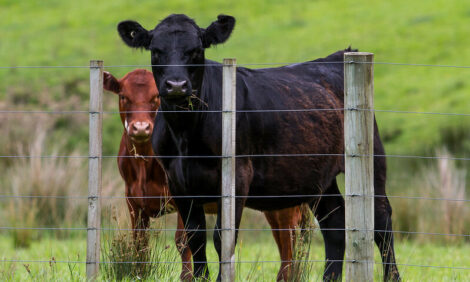



Three-Day Sickness Spike Hits CQ Cattle
QUEENSLAND - The arrival of early summer season storm rains has caused a significant spike in three-day sickness outbreaks in Central Queensland cattle herds in the past few weeks.Department of Primary Industries and Fisheries senior veterinary officer at Emerald Dr John Noble said that while a vaccine was available for ephemeral fever commonly referred to as three-day sickness, vaccination must be given before the outbreak occurred.
Dr Noble said three-day sickness was a viral disease transmitted by biting insects which caused the animal's temperature to rise coupled with joint inflammation.
"Three-day sickness can cause significant mortalities and weight loss and stock at greatest risk are generally those in prime condition aged from one to three years," Dr Noble said.
"Affected cattle with elevated temperatures drool saliva and are often found lying down. They are reluctant to get up on their feet and are visually stiff in one or more legs when they attempt to walk.
"While the resultant liveweight loss is an economic consideration, younger cattle usually recover quite well when left undisturbed although bulls that contract the fever can develop temporary infertility," Dr Noble said.
Rockhampton-based DPI&F principal veterinary officer Dr Rick Whittle said reports from Central and North Queensland suggest that some three-day sickness cases have been more severe with animals down for much longer and the death rate has been higher.
"Some animals have required intensive treatment for up to 14 days and have had lingering coordination problems," Dr Whittle said.
"Blood tests on cattle described as severely affected showed infection by other viruses known as orbiviruses which are also spread by biting insects.
"In one unconfirmed case, severely affected animals were reported to have been vaccinated against three-day sickness.
"To investigate whether other viruses are involved in these three-day sickness-like diseases, DPI&F researchers are keen to obtain blood samples from these animals that appear to be more severely affected and take longer than usual to recover," Dr Whittle said.
Dr Noble said three-day sickness can occur almost any time of the year in Central Queensland but the most obvious outbreaks follow rain which boosts insect activity.
Stockowners should avoid mustering cattle affected by three-day sickness.
Where cattle are down, provision of feed, water and shade is important for their recovery but a decision on euthanasia should be made early to avoid any suffering.
Treatment of high value stock should be done under private veterinarian direction.
Dr Noble said that for animals aged 30 months or older which are to be euthanised, stockowners should contact a DPI&F Biosecurity Queensland officer or a private veterinarian to collect a brain. A payment of $150 is available for brain samples collected for testing to verify Australia's freedom from Mad Cow Disease.
Dr Noble said the ephemeral fever vaccine was a live vaccine only available from a private veterinarian with two doses required at an interval of two to four weeks followed by an annual booster.
The key to a successful vaccination program is to ensure the vaccine is kept cold and that it is used immediately after mixing, use a multiple dose syringe and have enough people to assist with the administration process.
The vaccine, mustering and stock handling costs can be significant. Older cattle usually acquire immunity from being previously affected by ephemeral fever.
TheCattleSite News Desk


